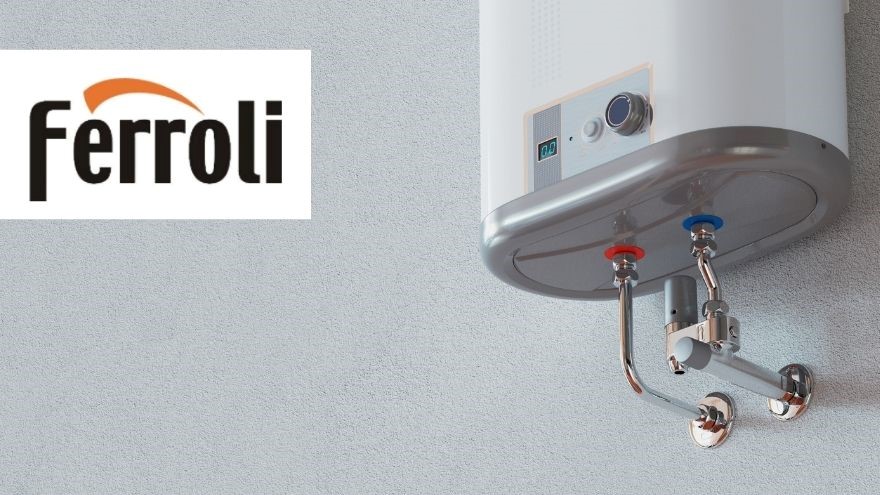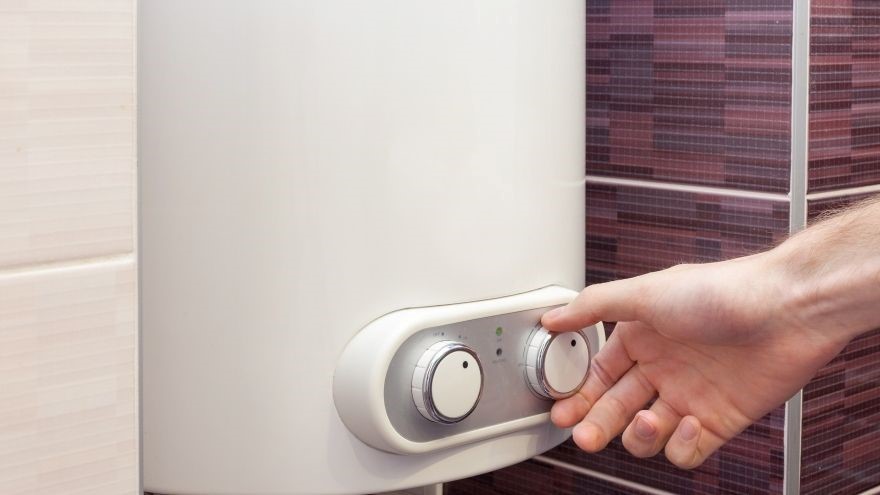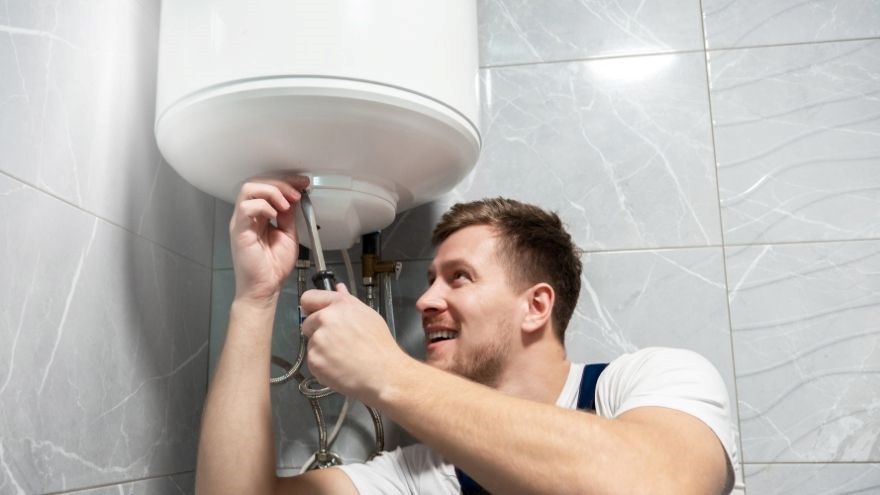Hot water in a building is often heated by a solid fuel boiler or a fireplace with hot air distribution or a water jacket. However, this solution lengthens the process of preparing domestic hot water and makes its use much more difficult, especially outside the heating season. Fortunately, electric heaters come to the rescue, available in flow and capacity variants. How do they differ and which one is better to choose?

From this article you will learn:
- how electric flow and capacity heaters work,
- what are the advantages and disadvantages of both types of heaters,
- who is the capacitive water heater intended for and who is the electric boiler for?
Electric flow heater or capacity heater?
Both types of electric heaters are simple devices that are quick and easy to install. They do not generate exhaust gases, so they do not require chimneys to operate, the construction of which involves significant financial outlays. Moreover, water heaters do not expose users to carbon monoxide poisoning, which cannot be said about improperly operated gas heaters .
By deciding to install an electric heater, the user guarantees access to hot water without having to turn on the boiler. This practical device is available in two versions, the specific parameters of which - such as power or capacity - can be conveniently adjusted to individual needs. So let's take a closer look at the principles of operation, advantages and disadvantages of electric instantaneous heaters and capacity heaters .

Flow heater – advantages and disadvantages
The instantaneous electric heater prepares hot water on demand - so it only starts working when you turn on the tap. This translates into reduced energy losses because the device heats only as much of the medium as is needed at a given moment. The tank is also small in size, which makes it easy to install in the immediate vicinity of a washbasin, sink, shower or bathtub.
The key parameter of electric instantaneous heaters is their power. It determines how much hot water the devices can prepare. In the case of tanks supplying domestic hot water only to washbasin or sink faucets, a simple and inexpensive single-phase model is sufficient. However, if the instantaneous heater is to be installed next to a shower or bathtub, it must have a power of at least several kW. Otherwise, it will not be able to prepare a sufficient stream of hot water.
Check out Ferroli electric heaters at the Onninen wholesaler
The instantaneous water heater comes in several variants that differ not only in the power of the heaters, but also in the control method:
- Single-point heaters - devices installed at one water intake point, characterized by low power and usually powering a washbasin or sink faucet.
- Multi-point heaters – devices that can provide hot water at several consumption points at the same time. They have a power of several to several kW.
- Electronically controlled heaters - the most advanced type of heaters, operating fully automatically. Thanks to the microprocessor, the devices maintain the water temperature set by the user, regardless of changes in the flow rate.
- Hydraulically controlled heaters - devices that mechanically turn on the first or second stage of heating, taking into account the amount of water flowing. The temperature depends on the size of the stream - the smaller it is, the warmer the hot water
Ferroli electric heaters
Capacitive heater – advantages and disadvantages
An electric storage heater is nothing more than a boiler. It is used to store hot water in a tank, so its most important parameter is capacity. Most models are equipped with a heater with a power of 1.5 - 2 kW. The device works in a completely different way than the flow variant. Despite this, it consumes exactly the same amount of energy because preparing hot water simply takes more time.
The advantages of capacity heaters certainly include the possibility of using a two-zone energy tariff (G12). Assuming a sufficiently large tank capacity, the domestic hot water preparation time can be limited to the hours of the second - and therefore cheaper - zone. Users of instantaneous heaters will not have such comfort.
However, storage heaters have their drawbacks. The most important are certainly the heat losses escaping from the tank into the room. This problem can be easily eliminated with solid insulation. Electric boilers are also accused of long waiting times for the heated medium to reach the water consumption points. Not only is this uncomfortable for the user, but it also translates into unnecessary losses. In this case, additional pumps ensuring circulation of domestic hot water come to the rescue. This solution ensures that water constantly circulates in the pipes between the tank and the draw-off points.

The capacity heater comes in two basic variants:
- Pressure heater – a standing model which, due to its weight and size, is usually installed in a utility room. The largest boilers have a three-phase power supply and are equipped with heaters with a power of 3, 4 or 6 kW. Some water heaters have a timer installed, which allows you to optimally use the cheaper tariff. Tanks of this type are made of steel and protected against corrosion.
- Pressureless heater – a much smaller variant of the boiler, made of plastic. It can prepare hot water only for one draw-off point, so it is most often mounted above a washbasin or sink. Its heater usually has a power of 1.5 kW and is powered by 230 V.
Which solution should you choose?
It is difficult to say clearly that one type of electric water heater is better than another. Choosing a specific device should be a matter of adapting it to the specificity of a given building.
A flow heater will be useful primarily in a house with a lower demand for domestic hot water, where several people do not use the water at the same time. It is also worth using it in buildings with limited space where it is difficult to find space for a large tank.
However, a storage heater can be used in a building where several draw-off points are used simultaneously. If the house is inhabited by, for example, a family of 4 or 5 people, they will certainly have to deal with morning and evening "peaks" of water demand. Of course, you need to find enough space for the boiler.
Exchange benefits in the new OnnTop loyalty platform!
It is worth remembering that both flow and capacity heaters come in many different variants, each of which has different parameters. Therefore, among single- and multi-point models, as well as pressure and non-pressure models, you should choose a device that is best suited to the specificity of a given building and the needs of its users. High-quality Ferroli electric heaters can be found in the Onninen wholesale offer!
